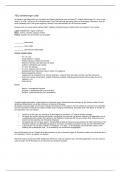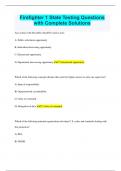Summary
Summary Edexcel A-level Business Theme 1: Marketing and People
- Institution
- PEARSON (PEARSON)
Pearson Edexcel A-level Business summary notes that cover the whole of Theme 1 (Marketing and People) and are structured using the Edexcel specification.
[Show more]












